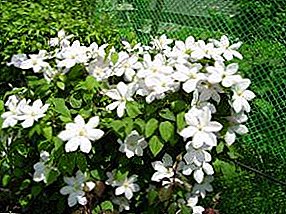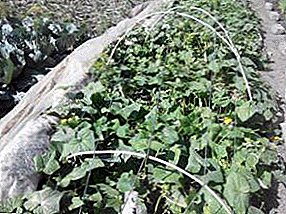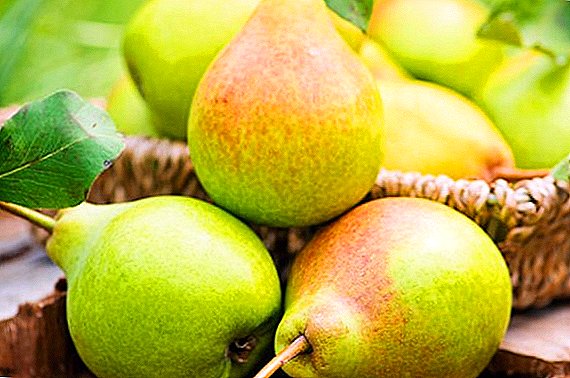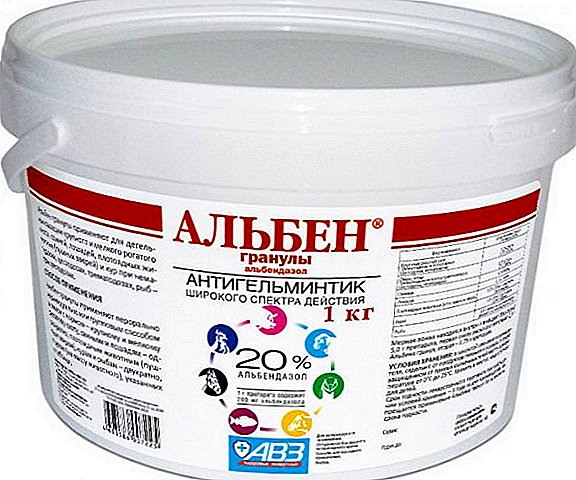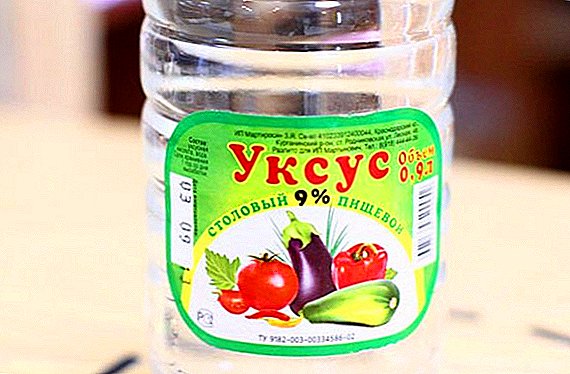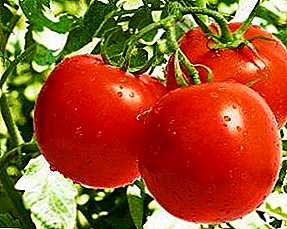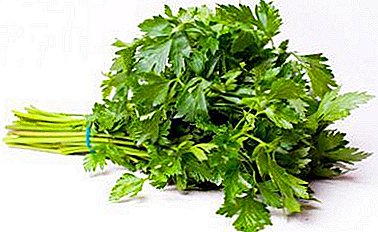
Parsley - a product of nature, which is found in every garden. This plant is rich in plenty of nutrients for the body.
The wide area of use of this plant, availability at any time of the year and the possibility of long storage makes it indispensable in the diet.
From this article you will learn about what vitamins, macro and microelements are part of parsley, how much it is calorie. And also what is the use of this vegetable and can its use harm the body.
Why is it important to know what substances are in the plant?
Despite the fact that parsley is good, it is not recommended for everyone to use it. Know the chemical composition, as well as the nutritional and energy value of the plant is important if only because some trace elements may be contraindicated for humans. This is possible due to certain diseases or conditions.
How many calories and BZHU it contains per 100 grams?
Let us further consider what the nutritional and energy value of the plant means, that is, how many calories (kcal) and BJU are contained in fresh parsley, as well as in thermally processed dishes using its greenery and root.
Calories and BJU spices per 100 grams:
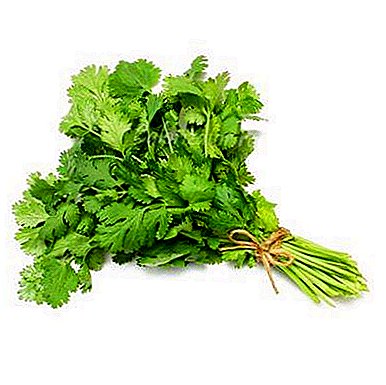 Fresh parsley. Usually, the deciduous part of the plant is used for cooking, thanks to its taste and aesthetic qualities:
Fresh parsley. Usually, the deciduous part of the plant is used for cooking, thanks to its taste and aesthetic qualities:- calories 57 kcal;
- proteins - 1.5 g;
- fats - 0.6 g;
- carbohydrates - 10.1 g
Low calorie content and a high component of BJU in 100 grams of fresh herbs give the plant a special significance.
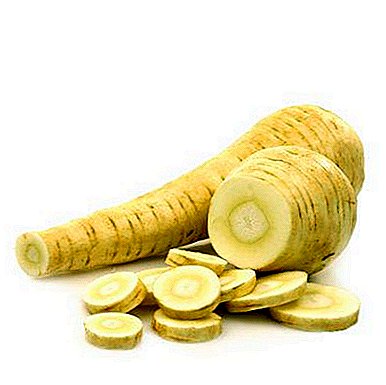 Parsley rootunderground, usually a light yellow color and has a peculiar smell. In Russia, the root vegetable has not gained much popularity:
Parsley rootunderground, usually a light yellow color and has a peculiar smell. In Russia, the root vegetable has not gained much popularity:- calorie - 47 kcal;
- proteins - 3.7 g;
- fats - 0.4 g;
- carbohydrates - 7.6 g
 Tea:
Tea:- caloric content - 45.3 kcal;
- proteins - 0.6 g;
- fats - 0.1 g;
- carbohydrates - 9.8 g
Tea with lemon, honey and parsley is rich in beta-carotene and vitamin K. Drinking such tea improves blood clotting.
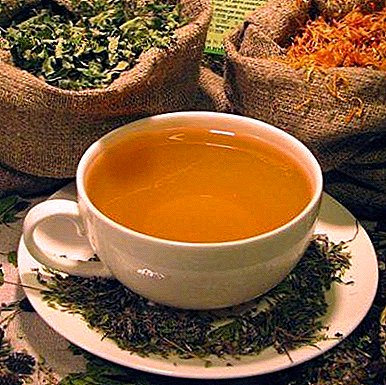 Decoction. Often, parsley makes a decoction, which is used as a diuretic. You can cook from any part of the plant, but the roots have a stronger effect:
Decoction. Often, parsley makes a decoction, which is used as a diuretic. You can cook from any part of the plant, but the roots have a stronger effect:- caloric content - 24.5 kcal;
- proteins - 1.9 g;
- fats - 0.2 g;
- carbohydrates - 3.8 g
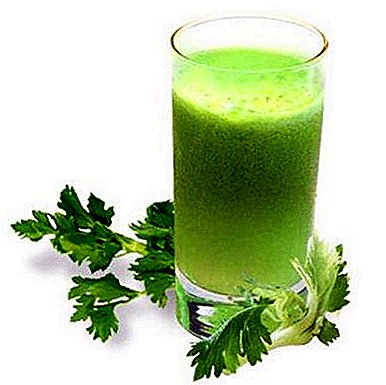 Infusion:
Infusion:- caloric content - 36 kcal;
- proteins - 2.97 g;
- fats - 0.79 g;
- carbohydrates - 6.33 g
What are the vitamins and chemical composition of spices?
The use of parsley for the body is associated with the presence in the chemical composition of its greenery and the root of many vitamins and minerals.
- Beta-carotene - 1,151 mg.
- Vitamin A - 97 mg.
- Vitamin B1 - 0.196 mg.
- Vitamin B2 - 2,383 mg.
- Vitamin B5 - 1,062 mg.
- Vitamin B6 - 0.9 mg.
- Vitamin B9 - 180 micrograms.
- Vitamin C - 125 mg.
- Vitamin E - 8.96 mg.
- Vitamin K - 1259.5 mcg.
- Vitamin PP - 9.943 mg.
- Choline - 97.1 mg.
The glycemic index (GI) is an indicator that characterizes the effect of carbohydrates derived from food on blood sugar levels. The digestibility of carbohydrates with low GI (up to 55) takes a longer time than with a high index, and causes a slow increase in the level of glucose in human blood.
GI of various products is expressed using a scale from 0 to 100 units. (without carbohydrates and with the maximum content, respectively). The parsley glycemic index is 5 units.
Important! The use of parsley is especially recommended for diabetics, since it is one of the products with low GI.
Macronutrients - elements that are relatively high in the human body. The macronutrients that make up parsley:
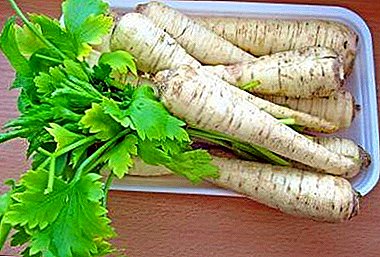 calcium - 1140 mg;
calcium - 1140 mg;- magnesium 400 mg;
- sodium - 452 mg;
- potassium - 2683 mg;
- phosphorus - 436 mg.
Trace elements are the same biologically important substances as macronutrients, but their concentration is lower in the body. Trace elements that parsley contains:
- iron - 22.04 mg;
- zinc - 5.44 mg;
- copper - 78 mcg;
- manganese - 9.81 mg;
- selenium - 14.1 mcg.
What is useful and harmful culture?
After reviewing the chemical composition and KBMU, it would seem that there is no doubt about its absolute usefulness. But is it? Consider in detail what the advantages and disadvantages of "growing on a stone."
Benefit:
- immunity strengthening;
- beneficial effect on blood composition (stimulation of blood cell production, normalization of hemoglobin level);
- strengthening the walls of blood vessels;
- prevention of inflammation of the mucous membranes of the oral cavity and the removal of unpleasant odors;
- decrease in gastric acidity;
- removal of toxins from the body;
- a decrease in blood glucose (due to low GI);
- normalization of vision;
- reduction of gas formation;
- treatment and prevention of arthritis;
- for women: normalization of the menstrual cycle, reduction of recurrent pain;
- for men: increase in potency and improvement of the urogenital system.
Harm plants:
- It is not always possible to get a guarantee that parsley is grown in the right conditions without the use of chemicals. Therefore, there is a risk of harm to yourself even in the absence of contraindications.
- Excessive eating parsley leads to an excess of myristicin (one of the elements of the essential oil). It may cause dizziness and nausea.
- In the presence of contraindications, parsley intake provokes deterioration.
The conditions under which it is recommended to minimize the use of parsley:
- kidney disease;
- urolithiasis disease;
- gout;
- age up to one year;
- epilepsy;
- pregnancy;
- individual intolerance.
Every housewife knows how and in which dishes to use parsley in the kitchen. But cooking should always be approached with caution. It is important to know the benefits of using the product, what effect it has on the body.


 Fresh parsley. Usually, the deciduous part of the plant is used for cooking, thanks to its taste and aesthetic qualities:
Fresh parsley. Usually, the deciduous part of the plant is used for cooking, thanks to its taste and aesthetic qualities: Parsley rootunderground, usually a light yellow color and has a peculiar smell. In Russia, the root vegetable has not gained much popularity:
Parsley rootunderground, usually a light yellow color and has a peculiar smell. In Russia, the root vegetable has not gained much popularity: Tea:
Tea: Decoction. Often, parsley makes a decoction, which is used as a diuretic. You can cook from any part of the plant, but the roots have a stronger effect:
Decoction. Often, parsley makes a decoction, which is used as a diuretic. You can cook from any part of the plant, but the roots have a stronger effect: Infusion:
Infusion: calcium - 1140 mg;
calcium - 1140 mg;